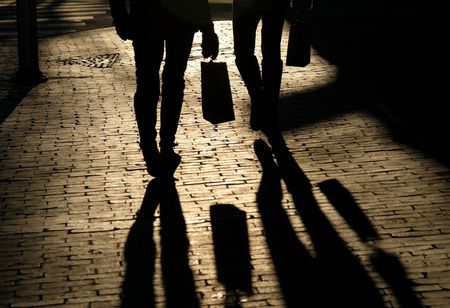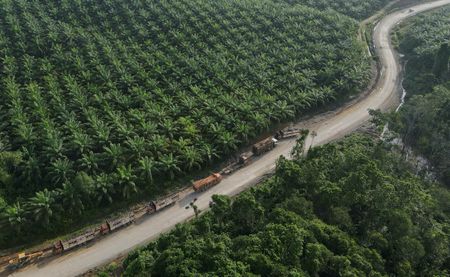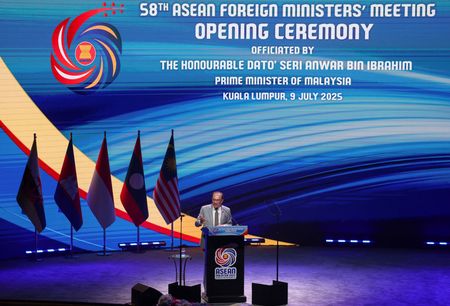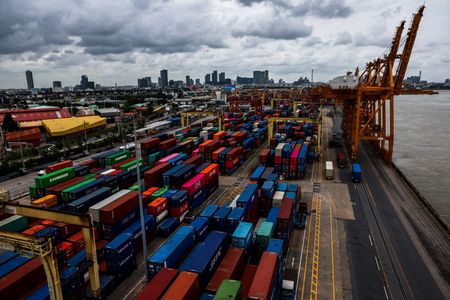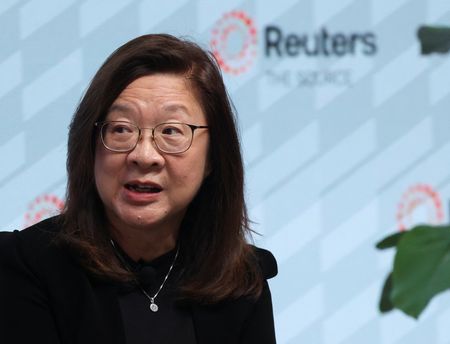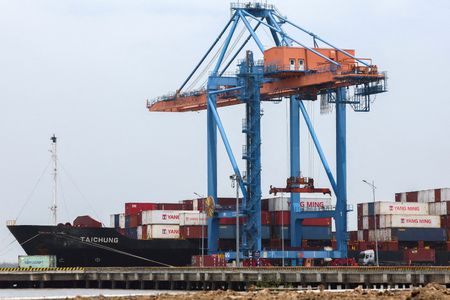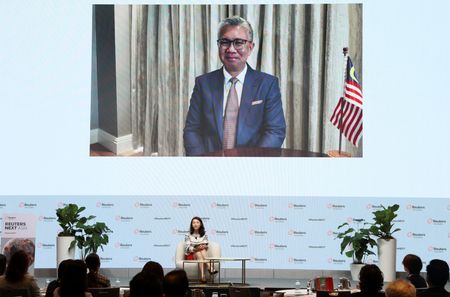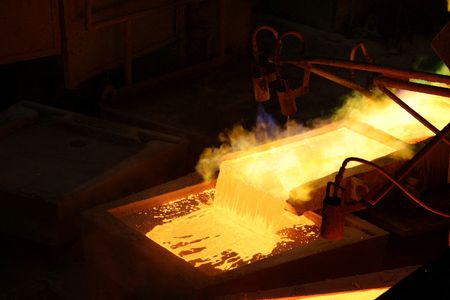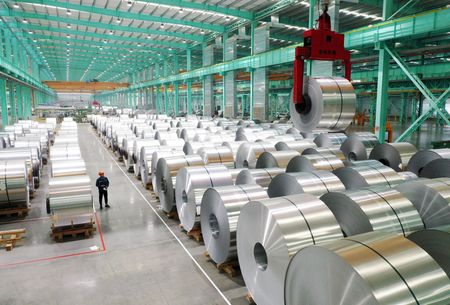NEW YORK (Reuters) -U.S. clothing retailers and footwear companies are facing heightened tariff exposure after the White House said it would put levies on more than a dozen nations, including several Asian countries like Vietnam and Indonesia, that supply large volumes of textiles to U.S. companies. Those levies range roughly from 25% to 40%.
Here is a breakdown on the potential tariff exposure for U.S. consumer apparel and footwear companies, based on where their manufacturing operations are located.
RALPH LAUREN:
Ralph Lauren produces most of its goods outside the United States, with about 19% from Vietnam and 15% from China, according to an April Raymond James report. The company said in May that supply chain is diversified enough to allow it to deal with supply disruptions.
NIKE:
Nike imported about 43% of its goods into the United States, according to Raymond James. Its sports footwear manufacturing is 50% from Vietnam, 27% from Indonesia, and 18% from China, according to Bernstein analysts. Sports apparel production breaks down as follows: 28% from Vietnam, 16% from China, and 15% from Cambodia. The company in June said it would allocate production differently to try to deal with the tariffs.
SKECHERS:
Skechers sources about 40% of its products from both China and Vietnam, according to Raymond James. The company has been redirecting imports away from China and relocating some production.
CAPRI:
Capri’s Michael Kors line is mostly produced in Asia, while Italy is its primary production source for Jimmy Choo. The company has been expanding production in Vietnam, Indonesia, and Cambodia.
TAPESTRY:
Tapestry’s sources primarily from Vietnam, Cambodia, and the Philippines, which combined represent about 70% of its production, the company noted in its May earnings release.
AMERICAN EAGLE:
American Eagle sources primarily in Asia, Raymond James wrote. The company is reducing its sourcing from China in 2025.
ABERCROMBIE & FITCH:
Abercrombie & Fitch’s sourcing was as follows: 35% from Vietnam, 22% from Cambodia, 12% from India, 7% from China, and 25% “other” in fiscal year 2024, according to Raymond James.
LULULEMON:
Lululemon fabric sourcing is 35% from Taiwan, 28% from China, 11% from South Korea, according to Raymond James analysts. Manufacturing is 40% Vietnam, 17% Cambodia, 11% Sri Lanka, 11% Indonesia, 7% Bangladesh.
PUMA:
Puma sources 30% of goods from China, 26% from Vietnam, 13% from Cambodia, and 12% from Bangladesh, according to Bernstein analysts.

